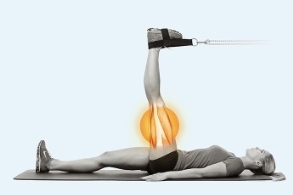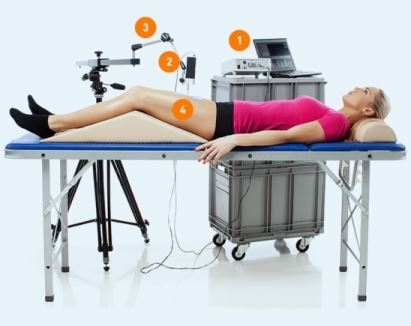
Tensiomyography (TMG)
The Center for Sports Neurology and Pain Medicine are focused on highlighting
and leveraging the explosion of information related to how the brain and
nervous system (spinal cord, peripheral nerves, and muscles) contribute
to performance and how optimization of nervous system function can dramatically
reduce or eliminate pain, accelerate recovery after injury and
prevent injury. Traditional imaging locates the structural damage. Tensiomyography
(TMG™) assessments give us information on how muscles are
working, inform how muscle
function is affected and what possible limits may occur in performance. The affected
muscles in the kinetic chain can be assessed at any time during the training
or rehabilitation process for further fine-tuning. TMG is a critical tool
in our armamentarium.
TMG assesses the functional capacity of an injured muscle within minutes by assessing and documenting several aspects of muscle function. Specifically, muscle strength/power, as well as muscle activation (how quickly the muscle reacts to an electrical stimulus), and muscle relaxation can be objectively measured and compared to the opposite side, to other functionally associated muscles, and/or to antagonist muscle groups.
Symmetrical and synchronized muscle function is an essential for optimal performance. TMG™ clearly identifies muscle pair asymmetry and asynchronous action in the kinetic chain. Dr. Williams uses this information to:
- Assess detailed individual muscle function
- TMG™ diagnostic measurements help identify muscle dysfunctions so that medical or sports performance professionals may adjust training accordingly by activating, strengthening or releasing tension in specific muscles. For instance, some athletes need strengthening of a muscle group to recover from injury or avoid an injury. Others may have normal strength, but need activation exercises to normalize the speed of contraction for optimal performance. Still others may have unusually increased tone and/or slowed relaxation phase after contraction. They may benefit from targeted stretching or from exercises (such as arthro-kinetic manipulation) to address abnormal neurologic tone that may have resulted from previous injury and/or the nervous system’s misguided attempt to protect from injury.
- Obtain objective information regarding healing/recovery after surgery or PT to guide return to play after injury.
- Predict injury risk and intervene to prevent injury.
- Assist in optimizing performance.
- Obtain objective information regarding musculoskeletal and myofascial contributions to chronic pain.

WHAT:
1. ELECTRICAL STIMULATOR
2. DIGITAL SENSOR
3. TRIPOD & MANIPULATING HAND
4. ELECTRODES
-
Latest Health InsightsLearn and explore our blogs and updates about sports neurology and pain medicine. Education is power & we are here to empower.
-
Visual & Audio InsightsWith years of practice and featured stories, watch our informative videos to gain a deeper understanding of our services and recent discoveries.
-
Recognized ExcellenceWe are trained and sharing our knowledge. Stay updated with the latest advancements and knowledge from recent discoveries.